Private Cloud: Important Information About the Configuration of vSphere and NSX-T
Please use the “Print” function at the bottom of the page to create a PDF.
This information is intended for users who want to configure vSphere or the NSX-T Data Center. The information in this article is intended for experienced system administrators who are familiar with networking, security operations, and VM technology.
This article explains the default settings that you should not change as part of the vSphere and NSX-T configuration.
Caution
If you change these default settings, these changes may result in the configured network no longer being accessible. If you change the default settings during a data transfer, you may lose data. Therefore, make sure that you do not change the default settings that are shown in this article.
NSX-T Data Center: Tier 0 Gateway
When you add a new Tier-0 gateway or edit an existing Tier-0 gateway, you must ensure that the following settings are active:
Network > Tier-0 Gateway > Edge Cluster Section:
In the Network > Tier-0 Gateway section, the default edge-cluster setting must be selected in the Edge Cluster list.

Network > Tier 0 Gateway > Route Redistribution section:
Also ensure that the following Route Redistribution settings are enabled:
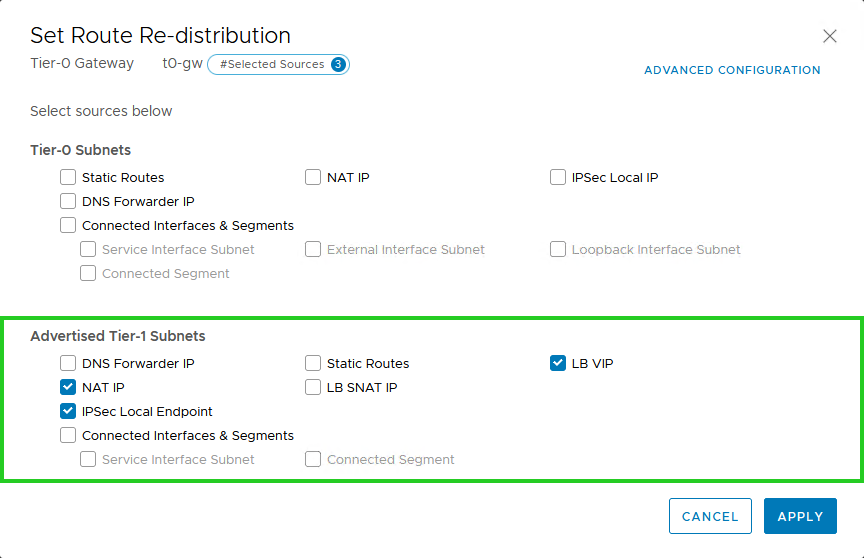
To access the Route Redistribution settings, click the corresponding number next to Route Redistribution.
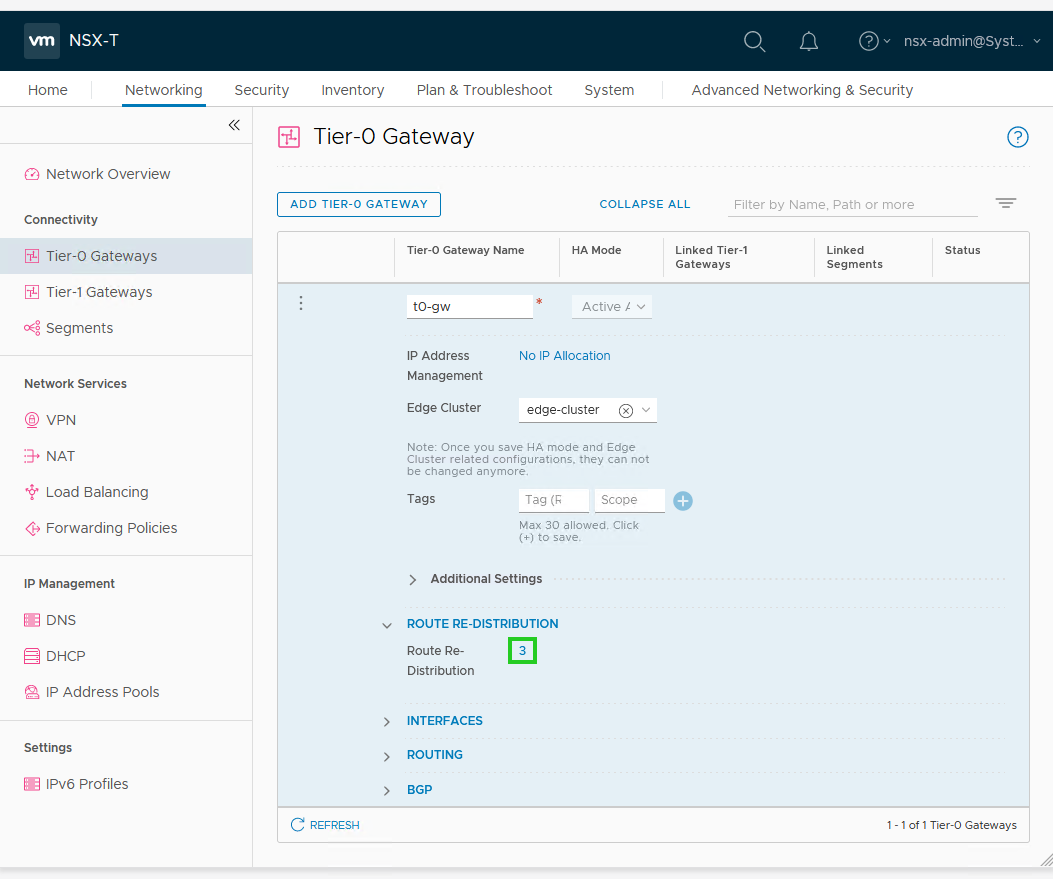
Network > Tier-0-Gateway > Interfaces section:
In addition, ensure that the following interfaces are listed in the Network>Tier-0 Gateway section:

To view the interfaces, click the number in the Interface section.

Network > Tier-0-Gateway > BGP section:
Verify that the following settings are enabled in the Network>Tier-0 Gateway>BGP section:
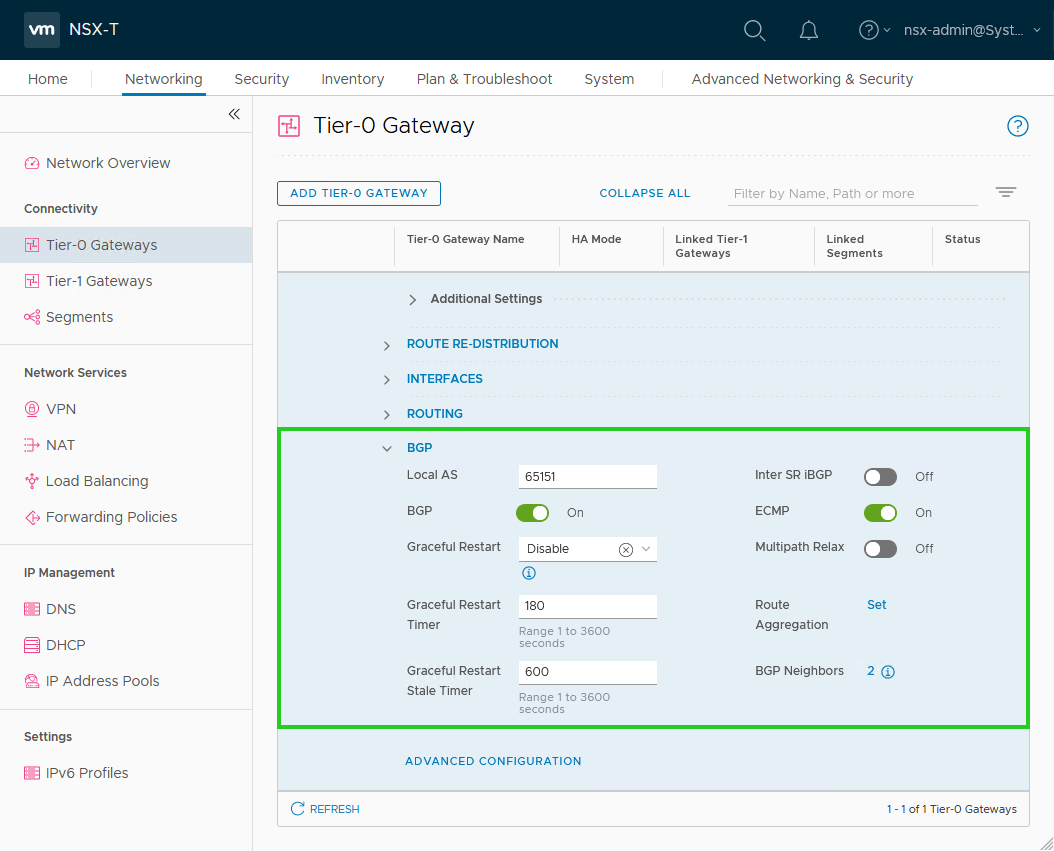
NSX-T Data Center: Tier 1 Gateway
When you add a new Tier 1 gateway or edit an existing Tier 1 gateway, you must ensure that the following settings are active:
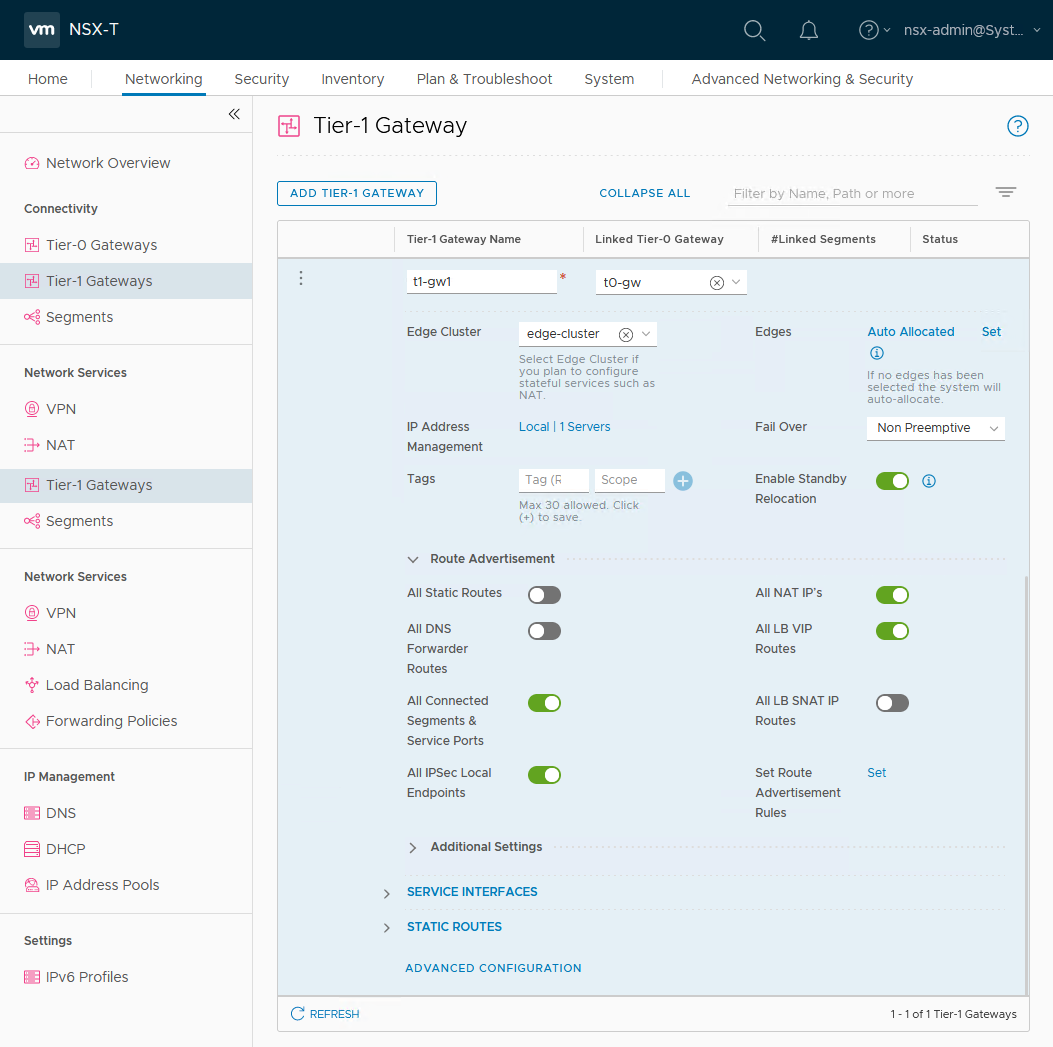
NSX-T Data Center: NAT
As part of the NSX-T Data Center configuration, ensure that the snat_internalsubnet rule for the source IP 10.255.1.0/24 and the snat1 rule are not changed in the NAT section. SNAT must be allowed for the network with the IP 10.255.1.0/24 as well as for the subnet 192.168.0.0/24 and must be configured as the server address for Local DHCP or Remote DHCP in the IP address management for the Tier 1 gateway.
You can check these rules and the associated settings in the Network > NAT section.
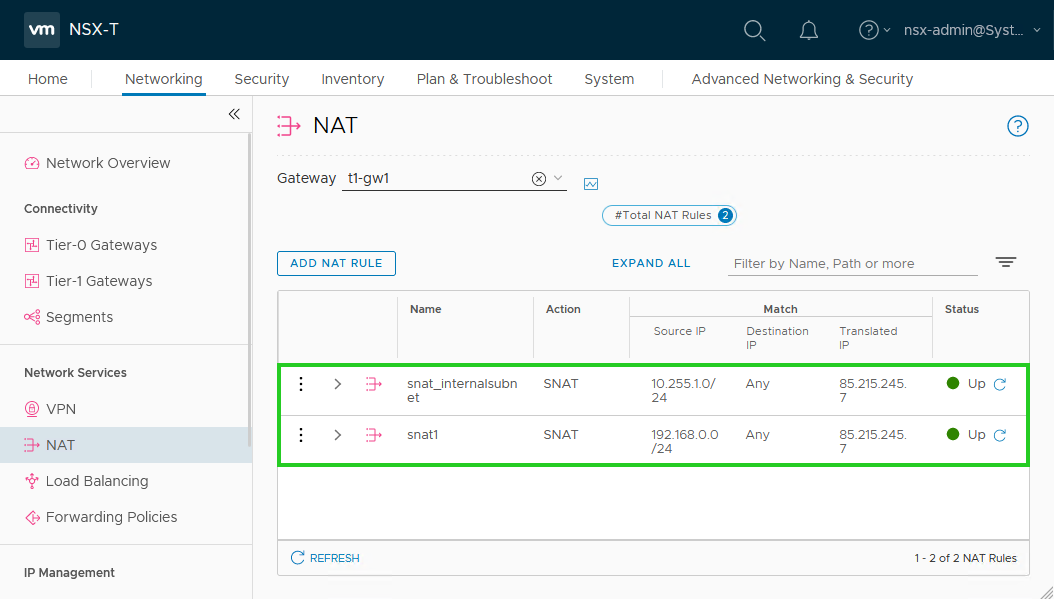
Use of the Private Cloud in Conjunction with Acronis Backup Services
When you add Acronis backup services to your deployments, a virtual machine named acronis-customer_cloud is automatically added to your vCenter. Network adapter 1 and Network adapter 2 interfaces are configured for this virtual machine.
Caution
If you change the settings of the Network adapter 1 and Network adapter 2 interfaces, you may no longer be able to perform backups using the backup services. In addition, there may be a risk of data loss. Therefore, make sure that the settings of these interfaces are not changed.